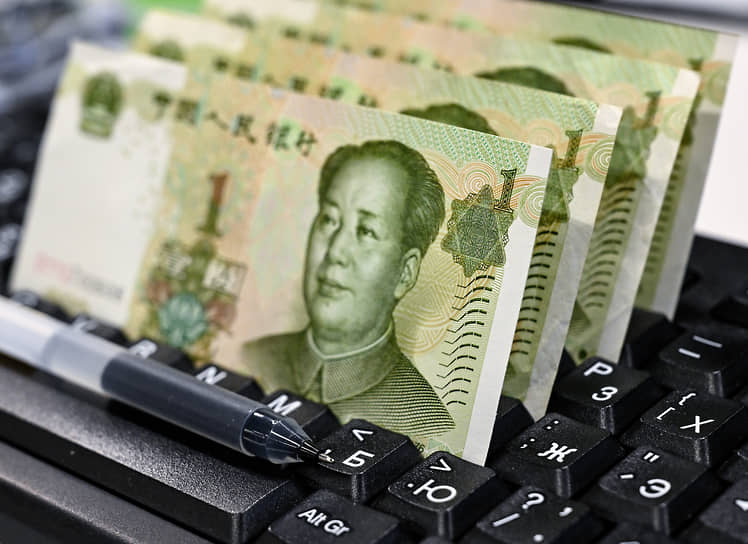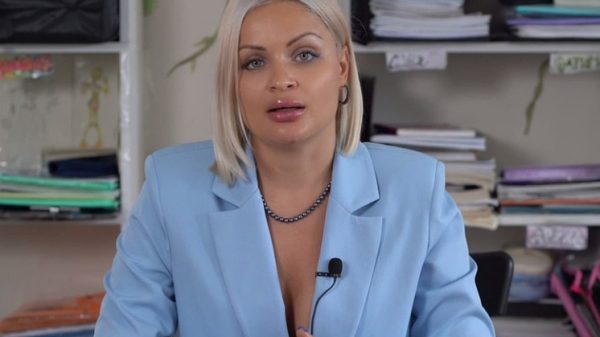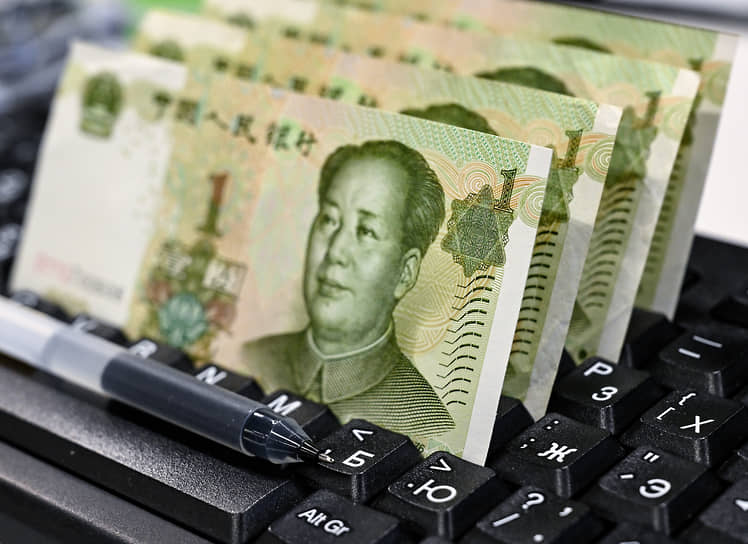At the end of October, the total volume of exchange trading in major currencies in the “tomorrow” delivery mode amounted to 6.4 trillion rubles, this is the second result since the beginning of hostilities in Ukraine. The growth in turnover is due to the Chinese currency, the trading volume of which for the first time occupied almost 50% of the market. The dollar maintains its share at just over a third, while the euro's share is gradually declining. Interest in “toxic” currencies is falling primarily from small players, which leads to an increase in the size of transactions.
Exit full screen mode Expand to full screen

Photo: Alexander Kazakov, Kommersant
Photo: Alexander Kazakov, Kommersant
According to Kommersant’s estimates, based on data from the Moscow Exchange, at the end of October, the total trading volume in major currencies (US dollar, euro, yuan, Turkish lira, Hong Kong dollar, Kazakhstan tenge, Belarusian ruble) against the ruble with settlement “tomorrow” exceeded 6. RUB 4 trillion This is 9% higher than the September figure and the second result since February 2022.
The main contribution to the increase in trading volumes was made by the Chinese currency, the trading volume of which increased by almost 330 billion rubles, to RUB 3.2 trillion
This was not prevented even by the holiday week in China, during which activity in the currency fell by one and a half times compared to average values. As a result, the yuan’s share approached 50%, increasing by more than 1 percentage point compared to September. Dollar trading volume increased in October by 203 billion rubles, to 2.3 trillion rubles, but the share was 35.6%, only slightly higher than the previous value. The share of transactions with euros decreased from 14.5% to almost 13%. At the end of 2022, “toxic” currencies together accounted for almost 63% of trading volume versus 36.5% for the yuan.
Despite the general trend of moving away from “toxic” currencies, it is not possible to completely abandon them in foreign economic activity. Small investors are most actively reducing interest. As a result, the average dollar transaction size increased from RUB 3 million. at the beginning of the year to almost 4.8 million rubles. in October. This is the maximum since March 2022 (6.2 million rubles), but then the situation was atypical, and in calm times the size of average transactions did not exceed the current value.
From the point of view of foreign trade, the dollar is more universal compared to the euro and has historically been used in settlements with many countries, analysts say. “The foreign trade turnover of the Russian Federation and the eurozone is declining as a result of restrictions, so the decrease in interest in the euro within the country seems logical,” explains Vladimir Evstifeev, head of the analytical department of Zenit Bank. At the same time, says Sovcombank chief analyst Natalya Vashchelyuk, more than 30% of imports from Asian countries are paid for in “toxic” currencies, and 25% of all imports into the Russian Federation come from unfriendly countries, which, as a rule, also prefer to receive dollars.
The flow of activity from “toxic” currencies continues to flow primarily into the yuan. With other “friendly” currencies, turnover is growing, but only slightly.
In October, Turkish lira trading volume was less than RUB 57 billion. (0.9% market share), with the Kazakh tenge — 47 billion rubles. (0.7%). Among the reasons, PSB chief analyst Denis Popov names the lack of growth in the share of such currencies in servicing trade turnover. Accordingly, the resource for expanding trading is limited. “The attractiveness of alternative currencies, with the exception of the yuan, remains low, since high-quality investment instruments have not yet appeared,” notes Vladimir Evstifeev.
The transition to settlements in the currencies of friendly countries is complicated by the fact that that their foreign exchange markets are often less developed. “Some currencies are excessively volatile (for example, the Turkish lira), which limits the popularity of their use, including for foreign trade transactions among residents of friendly countries,” notes Mr. Popov.
Therefore, further substitution The growth of “toxic” currencies will continue primarily at the expense of the yuan, but with a gradual increase in the share of other “friendly” currencies. “As economic ties and financial infrastructure develop, the share of the currencies of other friendly countries in trade turnover and trading on the foreign exchange market may increase,” notes Denis Popov. “But for now, the Chinese yuan will remain the main foreign currency for international payments.”






















































Свежие комментарии